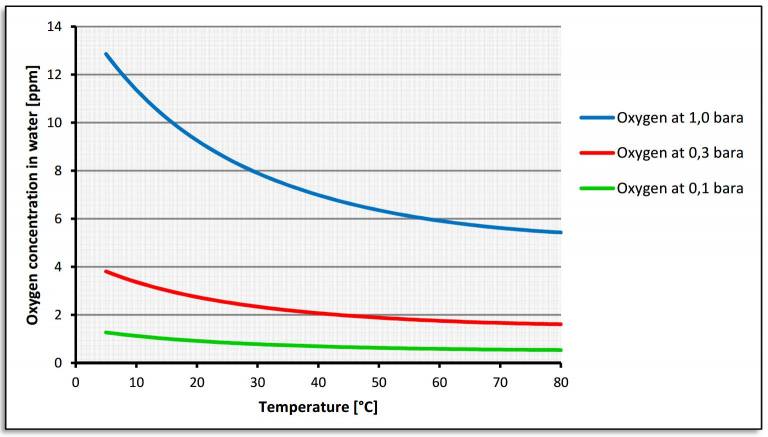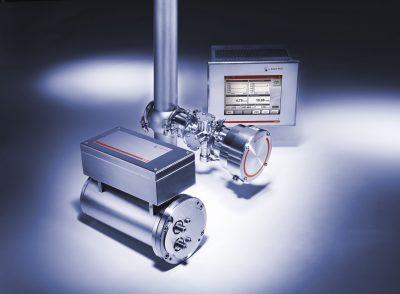
Economically significant effectHigh Gravity Brewing – is enjoying an increasing popularity these days. It is an easy way to save energy costs, produce beer economically and without making compromises on quality. The brewing process and fermentation aligned, we obtain a distinguished drinkable beer. Assuming the beer is controlled blended with cool, degassed water and afterwards carbonated.
High-gravity Brewing is made with a wort with a higher extract. The aim is to reach a finished wort extract from 13.5 to 14.5%. The higher original gravity levels are regulated by a higher malt filling for mashing or by addition of maltose or sugar syrup just before the end of cooking. The content of fermentable sugars is important of the syrup and should be recognized. Before fermentation, before filtration in the unfiltered beer or in the filtrate after filtering, the desired original gravity can be reinstated with water. In practice, the blending between filtration and pressure tank cellar has been widely adopted.
Degassed water is dosed right after the filtration but before the beer pump to the beer tank cellar. The carbonation is made in one step with the setting of the original gravity and alcohol content to the desired CO2 level.
The water for this has to be processed corresponding to the requirements. For dilution before fermentation, microbiologically safe and softened water is needed. If dilution is after filtration, the water must additionally cooled and free of oxygen. Establish the current demands of breweries, who produce beer after the highgravity method have an amount of residual oxygen content in water of <0.01 to <0.02 ppm (<10 to <20 ppb).

Why High Gravity Brewing?
The High Gravity Brewing process is used mainly to cut costs and save resources. The stronger brewing allows a performance improvement of the brewhouse at the same time saving energy, because a smaller volume of wort has to be heated, cooked and cooled.
Following, less fermentation and storage tanks are needed, especially when the beer is blended after the filter. This leads to a lower consumption of cooling and cleaning media. After the fermentation, there can be made several beers from one “main beer” in the filtration easily. Thereby the flexibility in production is increased.
Example: With a 300 hl of finished wort with 11% original gravity 3300 kg of extract are resolved. Increasing the original gravity to 15% decreases the wort volume to 220 hl. Now 80 hl less has to be heated and cooled. This represents a saving of 26.7%.
If you want to increase the performance of your brewhouse and you can produce a 300 hl finished wort with 15% and dilute it to 11%. This obtains a finished wort volume of approx. 409 hl. This represents a performance increase of 36% of the brewhouse. Even an increase in the extract content to 13 or 14% leads to significant savings.
What technical equipment is needed?
The fermentation of undiluted high-gravity wort requires an intensive aeration of the wort. It is a powerful wort aeration for fermentation of the higher amount of extract needed. Furthermore, a water degassing unit of adequate power and low residual oxygen levels is needed. This is necessary to have enough blending water available.
The setting of the carbonic acid, original gravity and alcohol content after filtration requires a highly accurate metering and control system, which is usually summarized in a blending and carbonation unit. If the high-gravity wort is diluted before fermentation, there is no special equipment is required.
Wort aeration systems
The wort aeration fed continuously and accurately sterile air or oxygen into the sterile wort. An injector splits the gas into fine bubbles and thus maximize the gas dissolution. The oxygen is optimal provided for the fermentation of yeast by this way. A reliable and reproducible fermentation is achieved. In highgravity wort, it is necessary to provide to the yeast 1 mg O2 /% wort.
Water Deaeration systems
All common degassing based on the same physical principle of a contact system. A stripping gas is used to cause a disturbance of the balance of gases dissolved in the water. The concentration of oxygen in the gas phase is lowered by the stripping gas. The phase equilibrium shifts and oxygen passes from the water into the gas phase. Besides CO2, N2 nitrogen can also be used as stripping gas. The optimum degassing apparate has to be in continuous flow and has to produce the largest possible contact area between the degassed water and the stripping gas. Here, the stripping gas and the water to degas flow to each other in counter-current to ensure a maximum concentration gradient. The transition of the oxygen into the stripping gas requires a certain residence time. The degassing must also apply to the CIP to be entirely suitable.
The degassing column meets these requirements perfectly. It is characterized by the fact that the water is trickling down into a column of random packings or structured packings. This produces a large specific surface and the temporally long direct contact of water with the stripping gas during the sprinkling. An intensive gas exchange is reached with this method. The CO2 flows in counter-current to the water upward through the column and generates a strong concentration gradient. Low CO2 consumption and unrestricted cleanability are characteristics of this process. The degassing column runs as hot and cold or vacuum (see Figure 1). By a temperature increase or a reduction in pressure, the gas solubility decreases and lower oxygen levels, while reducing CO2 consumption can be achieved (see Figure 2).

At the spray degassing, water is sprayed cold with CO2 in one or more evacuated container. Vacuum operation and the use of CO2 achieve an initially good degassing, but at a relatively high consumption of CO2. The required residual oxygen levels as needed for blending water are not reached. This is caused by the lack of counter-current effect and the comparatively small contact time and exchange surface. This is possible only through a multi-level and expensive arrangement with a significantly higher CO2 consumption.
In membrane degassing the water flows in membrane modules specific to hydrophobic hollow fibers. Inside, the stripping gas flows countercurrent to the flow of CO2. The semipermeable hollow fibers generate an extremely large contact surface between the water to degas and the stripping gas. Only gas can pass but no water. The membrane degassing is useful at a low degassing power of 30 – 50 hl/h. It is a compact and efficient system for degassing of residual oxygen levels below 0.01 ppm. Power consumption and consumption of CO2 are low. However, the CIP is only in a limited temperature range possible and not all cleaning products can be used.
Blending and carbonization systems

The blending and carbonation units control continuously and accurately the original gravity, alcohol and CO2 content in beer by precisely dosing of degassed water and CO2. Optionally a dose of colour beer, hops extract, flavoring or syrup can be integrated into the plant to make mixed beer drinks.

What’s important?
For the final adjustment of the CO2, original gravity, alcohol content and a highly accurate and reliable analytical measurement technique is essential (Fig. 3). The control has to operate precisely, based on control algorithms to compensate changes in flow rates and pressures quickly and accurately. The insertion of the CO2 is generally in-line by a gas injector. Here, the dose is divided into very small bubbles. Afterwards the CO2 is solved in the solution route. The intensive contact between gas, beer and water leads to a complete solution of the CO2. This is an absolute requirement in order to determine with high accuracy wort, alcohol and CO2 content in the outlet of the unit.
SummaryThe previously described systems have proven their reliability and accuracy with more than 150 installations of degassing and / or blending and carbonating. It is not always needed to produce and blend highgravity wort or beer. Even the original gravity correction brings economically significant effect on the filter and provides a very consistent quality. At the same time, the use of degassed water for the start of filtration or pipe exhaust leads to further quality improvement and a longer shelf life of beer.
Thomas Aldinger
Sales and Marketing, corosys Prozeßsysteme und Sensoren GmbH, Hofheim am Taunus
Stephan Dittrich
Managing director, corosys Prozeßsysteme und Sensoren GmbH, Hofheim am Taunus
Brauindustrie 04/2012